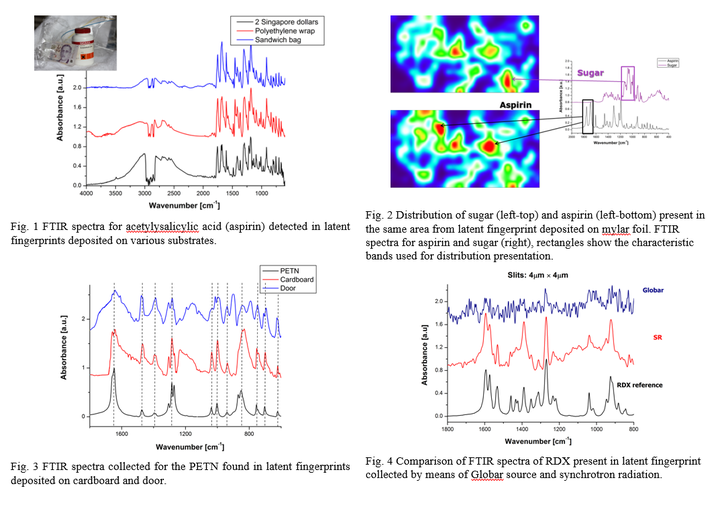Fingerprints 2010
 Results summary
Results summaryThe latent fingerprint, placed on a surface, is a complex mixture of natural secretions and contaminates from the environment. The few micrograms of sweat and dirt left behind in a fingerprint contain more than a physical pattern: the chemicals in the print are clues themselves, but they cannot normally be discriminated by their morphology alone. Hence Fourier Transform Infrared (FTIR) spectromicroscopy seems to be promising for using infrared encoded information to make more accurate fingerprint identifications - this can be potentially a very valuable procedure for certain cases - for example in identifying a person accused of building home-made explosive devices by finding in his/her latent fingerprints the residues of used ingredients. Synchrotron radiation (SR) based FTIR spectromicroscopy has been developed as a rapid, direct and non-destructive technique. This method, taking advantage of synchrotron light brightness and a small effective source size, is capable of exploring the molecular chemistry within the microstructures of microscopic particles without the destruction of inherent structures at ultraspatial resolutions. In the present study, we demonstrate the potential of SR-FTIR spectromicroscopy as an effective way to identify microscopic particles deposited within latent fingerprints on various porous and non-porous substrates. These particles are present from residual amounts of materials left on a person’s fingers after handling such materials.